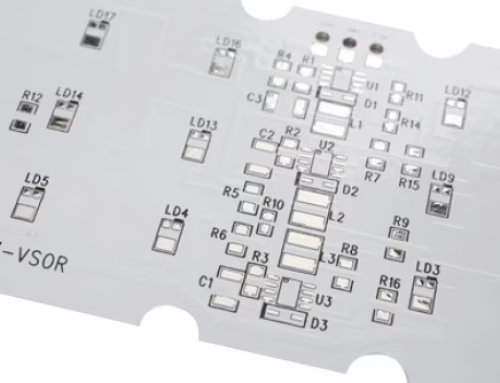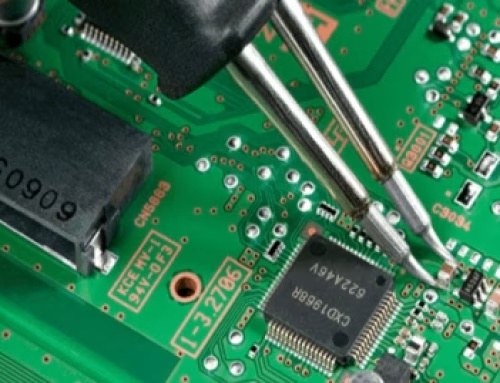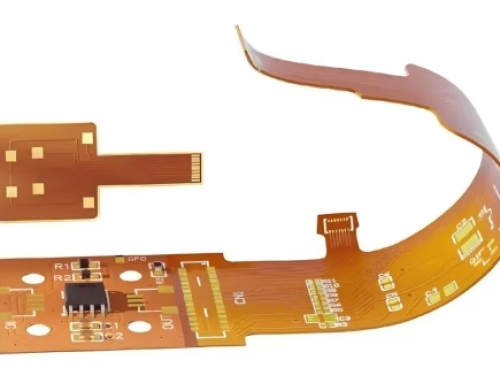Best Guide to PCB in Robotics, AI and Industrial Automation

Table of Contents
Ever cracked open a robot thinking you’d find something sci-fi and glowing inside? And then boom, it’s just a circuit board. A very serious, very busy-looking board, but still, a board.
That board, by the way, is probably an ai pcb. And it’s the unsung hero of nearly every intelligent machine we rely on today.
See, we all love talking about how “smart” robots are getting. But what most folks don’t realise is that without the right PCB architecture under the hood, that so-called intelligence goes nowhere fast. The ai pcb is where all that data from sensors, cameras, and machine learning models actually gets processed, routed, and turned into action.
Now zoom in on pcb robotics. These things don’t get second chances. If the PCB hesitates, your robot arm drops a product, misaligns a weld, or, worst case, crashes. I’ve seen entire lines shut down because someone tried to save money using a generic board.
Here’s why ai pcb and pcb robotics are mission-critical:
- Speed– AI-driven systems can’t lag. If signals aren’t processed instantly, the whole process breaks.
- Durability– Robotics lives in tough environments: heat, vibration, oil, dust, you name it.
- Custom builds– Off-the-shelf boards? Forget it. You need application-specific designs that work flawlessly with high-speed components and sensors.
Bottom line? These aren’t just fancy PCBs. They’re brains with nerves of steel.
1. What Is an AI PCB, Really?
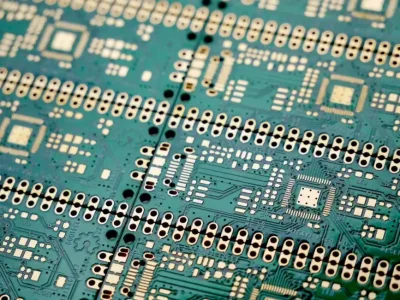
Let’s cut through the marketing fluff.
An ai pcb is a printed circuit board built from the ground up to support artificial intelligence tasks, everything from image recognition to real-time machine learning inference. These aren’t the same boards you’ll find inside your TV remote.
Think of them as data traffic controllers. Their job is to move huge amounts of information across CPUs, TPUs, memory chips, and edge sensors, without bottlenecks, without delays, and without crashing under pressure.
You’ll find ai pcb boards here:
- AI server blades for high-speed computation
- Edge devices in automated inspection robots
- Self-driving drones
- Smart agricultural bots
- Compact, low-cost pcb robotics used in classrooms and R&D labs
The real magic lies in the ai circuit board design, how the components are placed, how signals are routed, and how the board handles heat.
What’s wild is how common these are becoming. Even small robotics kits and consumer gadgets now run on basic ai pcb setups. And guess what? They’re not just reading inputs anymore, they’re reacting, learning, adapting.
If your device has a brain, chances are there’s an ai pcb doing the thinking behind the scenes.
2. Designing AI PCBs: Layout, Routing & Heat Survival
Okay, let’s talk about the part where things usually go wrong: design.
You can have the world’s best AI model, cutting-edge components, and a killer use case. But if your ai pcb layout sucks? It’s all going to fall apart.
Designing a proper ai pcb isn’t about cramming parts together and hoping for the best. It’s about planning every trace, every layer, every thermal zone, because this thing will be running hot and fast, 24/7, with no excuses.
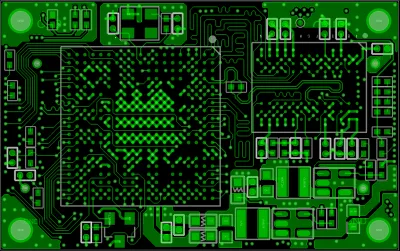
So what makes ai pcb design different?
1) Layout gets, intense
- You need tight placement to reduce signal delays.
- But crowding components creates heat pockets.
- And heat is the silent killer in both AI and pcb robotics systems.
2) Routing is chess, not checkers
- High-speed lines need controlled impedance.
- Signal integrity becomes life-or-death.
- ai pcb routing needs to factor in interference, grounding, and exact trace lengths.
If one trace is off by even a couple of mm? You’ll see ghost signals, jitter, or worse, complete system failures.
3) Heat is the enemy
AI workloads are brutal on power. Chips heat up fast, and if your ai pcb can’t handle it, the entire board turns into a toaster oven.
You deal with that by:
- Adding thermal vias under hotspots
- Including heatsinks or copper pours
- Simulating airflow if the board’s going into a robotics enclosure
And in pcb robotics, thermal mismanagement doesn’t just degrade performance. It physically kills the board, melts solder, warps substrates, even fries the logic chips.
3. PCBs in Robotics: Real-World Use Cases That Might Surprise You
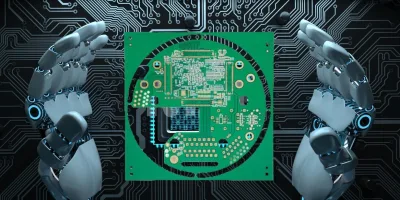
If you still think robotics is just about robotic arms on assembly lines, think bigger. PCB robotics is behind everything from self-balancing robots to warehouse fleets that can map, plan, and move on their own.
And here’s the twist: most of the complexity? It’s packed into the pcb.
Where You’ll Actually See pcb robotics In Action:
- Line follower bots used in delivery and sorting (yes, those simple-looking ones in warehouses? PCB-driven.)
- Factory arms making micro-adjustments in real time
- Autonomous drones scanning inventory or handling last-mile delivery
- Educational robots used in coding bootcamps or high school robotics leagues
Ever seen a pcb line follower snake its way along black tape with laser precision? That little bot is running off a compact, well-routed line follower pcb, and probably has better coordination than some people I know.
And the truth is, these systems are only as smart as the boards they run on. Cheap out on your pcb robotics stack, and suddenly your tracking bot veers off course or misreads a sensor input. It’s not the code, it’s the hardware choking.
When it comes to robotics, the PCB isn’t just supporting the system, it is the system.
4. AI Server PCBs and Industrial Control: The Brains Behind the Machines
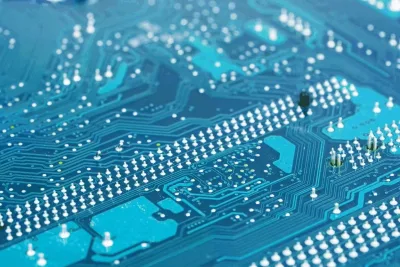
Let’s move from nimble little bots to the beefy back-end stuff.
AI Server PCBs are the heavyweights. These are high-performance ai pcb builds designed to live inside edge computing units, inference engines, and industrial servers. They crunch petabytes of data, feed robotic systems with predictive models, and manage complex decision-making systems across entire floors of machinery.
If your factory’s smart system knows when a motor’s about to fail? That’s probably an AI Server Printed Circuit Board pulling logs, comparing trends, and triggering alerts before you even know there’s a problem.
Now toss in industrial control pcb into the mix, and you’re looking at:
- Real-time process management
- Multi-sensor fusion for automation
- Onboard learning and adjustment
- Low-latency feedback loops for pcb robotics
Industrial automation used to rely on big, separate control units. Now? It’s all embedded directly into the board. Smaller footprint, faster response, less cabling, and fewer things to fail.
And yes, the design gets nuts. These ai pcb setups need to handle power conversion, EMI shielding, memory allocation, and thermal management like it’s nothing. Most run 24/7 under brutal conditions.
5. Automated PCB Manufacturing: What Really Powers the Industry
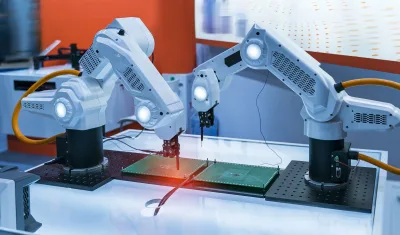
Now here’s a twist. The machines that build these smart boards? They’re using PCBs too.
Welcome to automated pcb manufacturing, where pcb automation industrial setups build the very boards that drive AI and robotics. A bit meta, right?
But here’s the beauty of it: automation isn’t just about speed. It’s about precision. And when you’re talking ai pcb builds with micron-level trace tolerances, you need machines that don’t mess around.
How this plays out:
- Pick-and-place bots use vision systems to place 01005 resistors with scary accuracy.
- AOI (automated optical inspection) catches defects faster than any human could.
- SMT lines are optimized for both flex and rigid boards, often running 20+ product types per day.
And the boards being made? They’re not basic. These are automated pcb manufacturing builds that include:
- Multilayer routing for complex logic and data flow
- Heat-tolerant structures for AI processors
- Custom trace shielding to prevent interference in robotics
The irony? A lot of robotic systems are powered by boards that were built by, robots. Circle of life, PCB edition.
6. Why PCB Quality Makes or Breaks AI and Robotics
If there’s one place where AI projects quietly die? It’s at the hardware level.
I’ve seen startups build killer AI models, crazy efficient, fast, accurate. But when they put it on a poorly made ai pcb? Lag. Overheating. Signal glitches. Everything falls apart. That’s not a software problem, that’s a pcb quality issue, plain and simple.
And don’t get me started on cheap pcb robotics builds. One unbalanced trace or loose solder joint and your robot goes from “autonomous” to “stuck in a loop spinning in place.”
Why quality matters more than you think:
- Signal Integrity– Noisy boards = scrambled data. That’s a nightmare for machine vision and real-time processing.
- Thermal Reliability– AI loads heat up fast. If your board can’t take it? Expect shutdowns, or worse.
- Mechanical Strength– Especially in pcb robotics, boards face vibration, bending, and mounting stress every single cycle.
- Consistent Yield– Low-end manufacturers might give you 60% usable boards. The rest? Straight to scrap.
And sure, automated reflow ovens, flying probe tests, and AOI inspections help a ton. But if your layout was bad from day one, or you cheaped out on your ai circuit board design, those tools can’t save you.
Here’s the deal: if your AI is smart, your board better be smarter.
7. AI & Robotics PCB FAQs
It’s a printed circuit board built specifically for artificial intelligence tasks, things like processing vision data, running edge inference, and supporting machine learning hardware. Unlike regular boards, an ai pcb is optimized for speed, thermal control, and high-bandwidth data routing.
Pretty much everywhere now, inside AI server blades, robotics systems, smart agriculture equipment, surveillance platforms, and even some consumer tech. If your device thinks or learns, it probably has an ai pcb inside.
It refers to the design and application of PCBs specifically used in robotic systems. These boards control everything from motion and sensors to communications and AI processing. Pcb robotics is what makes autonomous hardware, well, autonomous.
A line follower pcb is used in simple robots that track and follow a visual path (usually a black line on a white surface). The board integrates sensors, logic, and motor control. You’ll find them in both educational bots and warehouse automation.
Crucial. AI workloads push chips hard, which generates heat fast. Without proper thermal design, heat sinks, copper pours, thermal vias, your ai pcb routing will suffer signal issues or even permanent failure.
Absolutely, if done right. Today’s automated pcb manufacturing setups are insanely precise. They use pick-and-place machines, optical inspection, and smart SMT assembly to produce consistent, complex boards at scale.
Modern industrial control pcb designs can. Many now integrate onboard processing for simple AI tasks like anomaly detection, predictive maintenance, and local decision-making, all without sending data to the cloud.
Look for:
- Proven track record with AI or robotics clients
- Clean documentation and DFM feedback
- Full testing (not just visual)
- Transparency in material sourcing
If a shop says yes to everything without asking questions? That’s your cue to walk away.
8. Summary
AI and robotics might grab headlines for being futuristic, but none of that magic works without the right hardware underneath. At the heart of it all? The humble, but increasingly powerful, PCB.
We’ve seen how ai pcb designs are pushing boundaries in edge computing, vision processing, and machine learning. And how pcb robotics systems are powering everything from warehouse automation to precision agriculture. These boards aren’t background players, they’re the core of the action, managing real-time decisions, movement, heat, and high-speed data flow 24/7.
Whether you’re building a line follower bot or designing a full-blown AI inference rig, it all comes down to the board. A sloppy layout, weak routing, or thermal misstep? That’s all it takes to tank your entire system. On the flip side, a well-built ai pcb or industrial control pcb can make a $200 robot feel like a $2000 one.
And don’t forget how these boards get made. Automated pcb manufacturing is now a world of tight tolerances, rapid prototyping, and real-time inspection. The machines building your boards are powered by boards themselves. Circle of life.
If you’re serious about performance, you need serious manufacturing to back you up. That’s where Y&T Technology Development Co.,Ltd comes in. With over 14 years of experience in PCB manufacturing and assembly, they understand what it takes to build boards for AI, robotics, and everything in between. Whether you need a prototype run or a full production batch, they’ll help you build smarter from the start.
Bottom line? Smarter machines start with smarter PCBs. Don’t cheap out on the thing that holds your whole system together.
Latest Blog
Contact us
Free Quote


